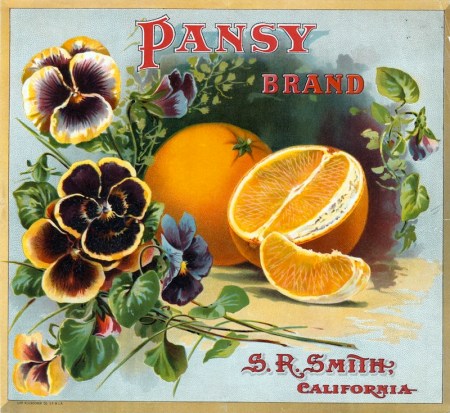The story starts in late-18th-century New England, with four-part hymns set by America’s first composers (in particular, William Billings of Boston). Though pretty clearly related to English “artistic” hymn-writing, this music was “rustic” and “naive” in various ways — the lines often travelled in parallel fourths and fifths, and the harmony was “dispersed”, with lots of open chords (not always filled with thirds, and very rarely with seconds) and with the voices distributed over as wide a range of pitches as possible. Although sometimes sung with instrumental or organ accompaniment, the music was arranged so as not to need accompaniment; this allowed it to be sung in places that lacked the instruments. As an aid to learning, composers began writing the music with different shapes for the different notes of the scale; the shapes had the additional virtue of freeing the music from the particular key chosen by the composer (or, more often, printer), so that the songs could be sung in any key that fit the voices of a group of singers.
Music masters could then travel from place to place and quickly teach the techniques, and then locals could pass them on; soon, professional musicians could be dispensed with entirely, as they have been for nearly two hundred years now. Originally associated with church services, the singing soon became a communal event for occasions when there was no church service (two or three sundays out of four, in many places).
Printed books of songs sprung up, hundreds of them eventually, most in the oblong shape that allowed a whole line of text and tune to be fitted into a single printed line. The now-dominant book — the one I sing from — is The Sacred Harp (Denson Revision, first ed. 1844, last rev. 1991), though there are also singings from the “Cooper Book” (The B.F. White Sacred Harp, revised Cooper edition) and from The Christian Harmony (with a 7-shape notation shared by a number of other books). And from auxiliary books like Northern Harmony and Northampton Harmony, which provide a constant source of new songs, some of which are eventually incorporated into the “Denson book”. (Other added songs are revivals from the 18th and 19th centuries. Billings keeps expanding over the years; in my opinion, Boston — “Methinks I see a heav’nly host of angels on the wing” — deserves a place in the next revision, but then I’m very big on angels and trumpets.)
The music traveled in this way down the Appalachians, picking up other musical influences along the way (English folk traditions; European art music; Scots-Irish folk music; the music of the many American revivalist movements and camp-meetings); setting itself off from (or being actively rejected by) other musical waves of the period (Lowell Mason’s “good music” movement; what came to be American gospel musics, white and black); retreating to rural communities of the deep South, especially in Georgia and Alabama, especially in Primitive Baptist and Primitive Methodist churches, where it served as an ecumenical bond between churches riven by their endless doctrinal schisms.
This history gave rise to at least two of the characteristic 20th-century features of the tradition: a resolute anti-doctrinarian stance (which has made it possible for non-believers, Jews, Quakers, Mormons, and other outlandish types to find some kind of place under the larger Sacred Harp umbrella) and the communitarian ethos manifested most clearly in the tradition of “dinner on the grounds” after a singing, typically supplied pot-luck style by the participants, sometimes by the host.
Along with these traditions go the many democratic customs of shapenote singing, in particular, passing the leadership for songs from person to person (the leader selects a song, announces which verses and which repeats will be sung, pitches the song, and beats the time — or assigns some of these responsibilities to someone else); and the amiable negotiation of pitches.
As the music came to be seen by some people as irredeemably old-fashioned and rustic, there was a real threat that it might have vanished, but an assortment of forces combined to preserve and invigorate the tradition — among them, long-standing efforts between communities to join together in singing conventions, now made easier by modern communications, and growing outside interest in the tradition, from displaced Southerners and from “folkies” in the East, the upper Midwest, and California.
I came to shapenote singing through a boyfriend in Columbus, Ohio, who got it from his housemate Fred (they were both English country dancers), and Fred got it from the Christmas folk celebrations in Berea, Kentucky, that his parents participated in. So my boyfriend said to me, “Fred’s starting this singing group, and I think you would really like this stuff.” He’d already introduced me to Bare Necessities — one of the great pleasures of a much younger boyfriend is finding out about things you might never otherwise have come across — and to his assortment of local friends, including his best female friend Barbara, who eventually, through the modest mediation of my partner Jacques and me, met and then married Geoff Pullum.
So I trusted his judgment, and boy, did I like that stuff. Put it down to the folk movement and gay liberation.
I think this is a truly wonderful story, all parts of it, and I’ll never tire of telling it, in variants both brief and embellished with personal details.
The Bay Area has a Sacred Harp group in San Francisco, one on the peninsula, two in Berkeley/Oakland, and one in Santa Cruz. So in addition to my very tiny local family of blood (my daughter and grand-daughter), I have a shapenote family as well as a linguistics family and an lgbt family. And they overlap. We’re singing on Sunday for the linguists, and the singers will include my daughter and several gay friends.










